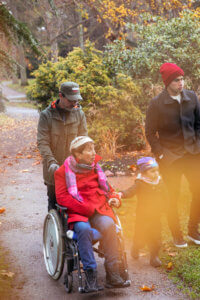Informal and formal care for persons living in ordinary housing – changes and interplay from 2001-2015 in the SNAC project

The aim of this report was to examine the extent of informal and formal care for individuals who live in ordinary housing in Sweden. This goal was accomplished by the use of four NEAR population-based studies: the Swedish National Study on Aging and Care in Kungsholmen (SNAC-K), Nordanstig (SNAC-N), Skåne (SNAC-S), and Blekinge (SNAC-B), where individuals who were 80+ years were included.
No major changes in informal and formal care between year 2001 and 2015 in Sweden
There were no major changes in the extent of formal and informal care provided in the home between 2001 and 2015. Overall,
informal care is twice to four times greater than that of formal care. There are also regional differences where formal home care is more common in larger cities, while informal care is more common in rural areas. In conclusion, as the proportion of older individuals steadily increase, the need for formal and informal care will expand. This will result in an enhanced burden for personnel working within the home care sector, as well as for families providing informal care.

Photo: Victor Celis Schüberg
Reference: Wimo A, Handels R, Elmståhl S, Fagerström C, Fratiglioni L, Isaksson U, Larsen O, Sanmartin Berglund J, Sjölund BM, Sköldunger A, Wahlberg M. Informell och fomell vård hos äldre personer i ordinärt boende – förändringar och samspel över tid 2001- 2015 i SNAC projektet. SNAC, 2020. doi: 10.13140/RG.2.2.23389.03044 42.









